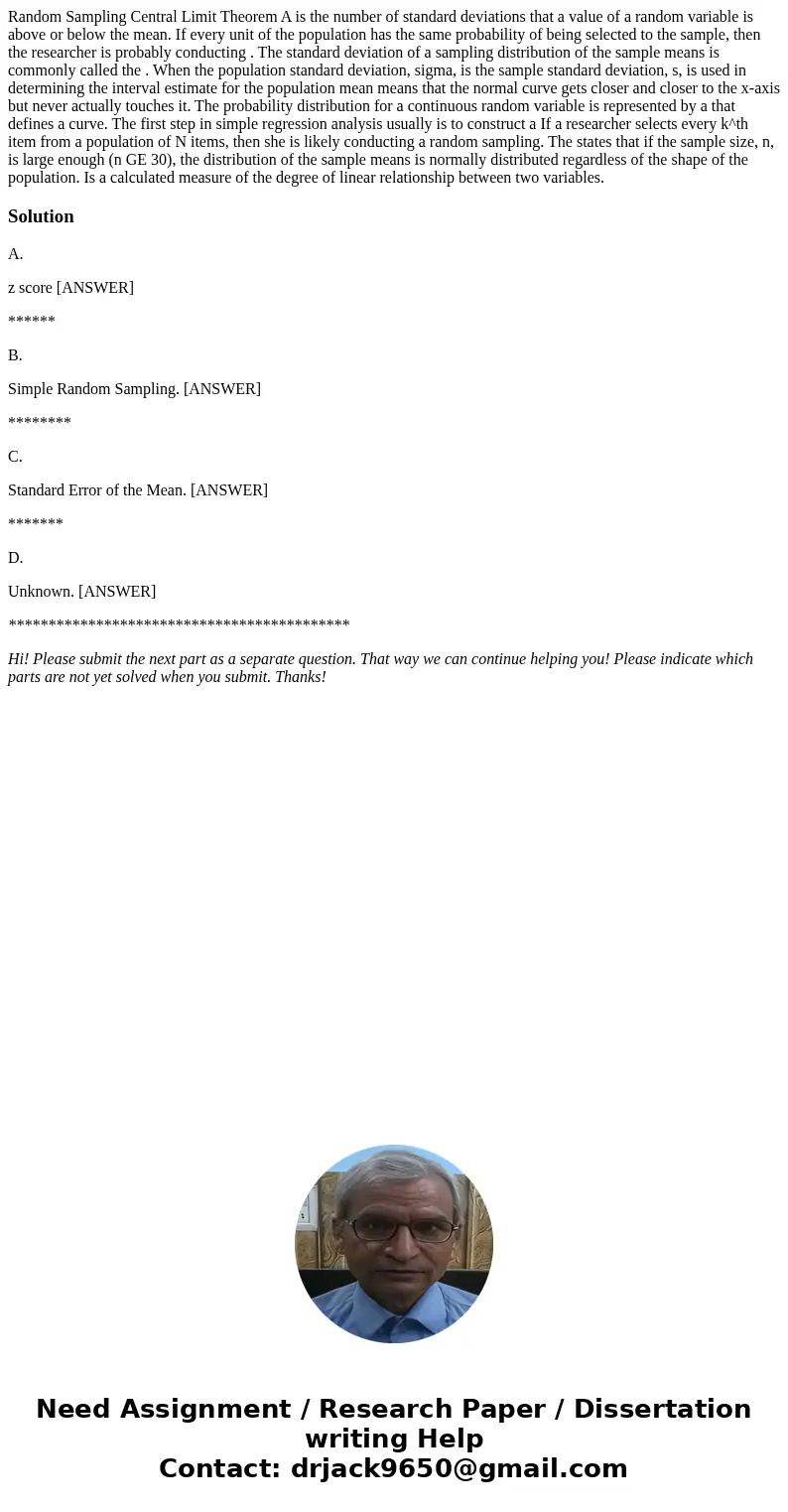Random Sampling Central Limit Theorem A is the number of sta
Random Sampling Central Limit Theorem A is the number of standard deviations that a value of a random variable is above or below the mean. If every unit of the population has the same probability of being selected to the sample, then the researcher is probably conducting . The standard deviation of a sampling distribution of the sample means is commonly called the . When the population standard deviation, sigma, is the sample standard deviation, s, is used in determining the interval estimate for the population mean means that the normal curve gets closer and closer to the x-axis but never actually touches it. The probability distribution for a continuous random variable is represented by a that defines a curve. The first step in simple regression analysis usually is to construct a If a researcher selects every k^th item from a population of N items, then she is likely conducting a random sampling. The states that if the sample size, n, is large enough (n GE 30), the distribution of the sample means is normally distributed regardless of the shape of the population. Is a calculated measure of the degree of linear relationship between two variables.
Solution
A.
z score [ANSWER]
******
B.
Simple Random Sampling. [ANSWER]
********
C.
Standard Error of the Mean. [ANSWER]
*******
D.
Unknown. [ANSWER]
*******************************************
Hi! Please submit the next part as a separate question. That way we can continue helping you! Please indicate which parts are not yet solved when you submit. Thanks!

 Homework Sourse
Homework Sourse